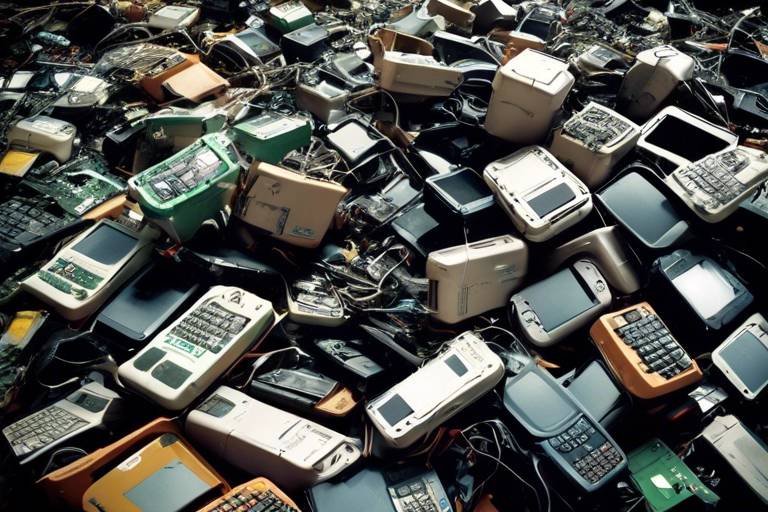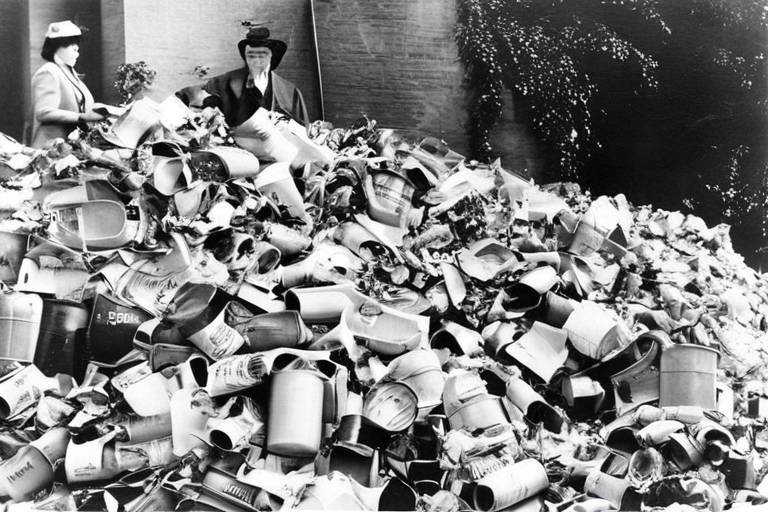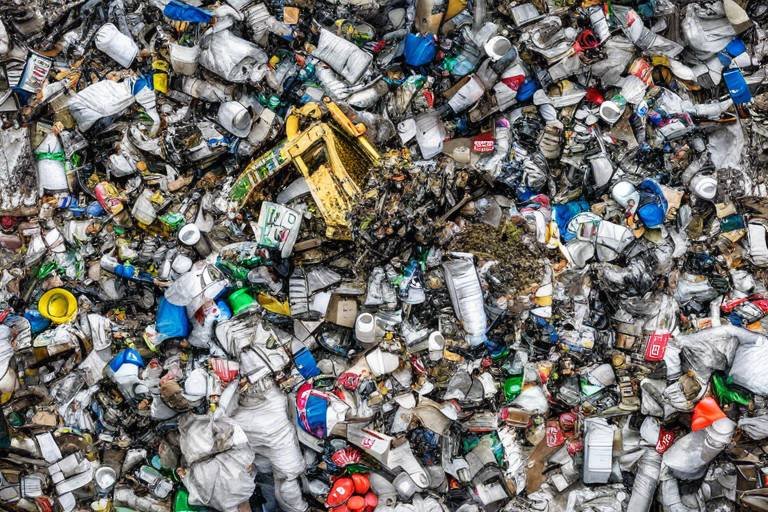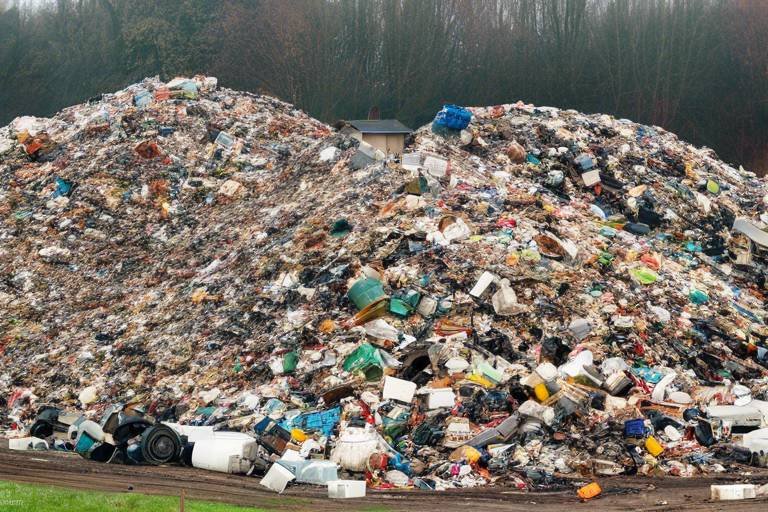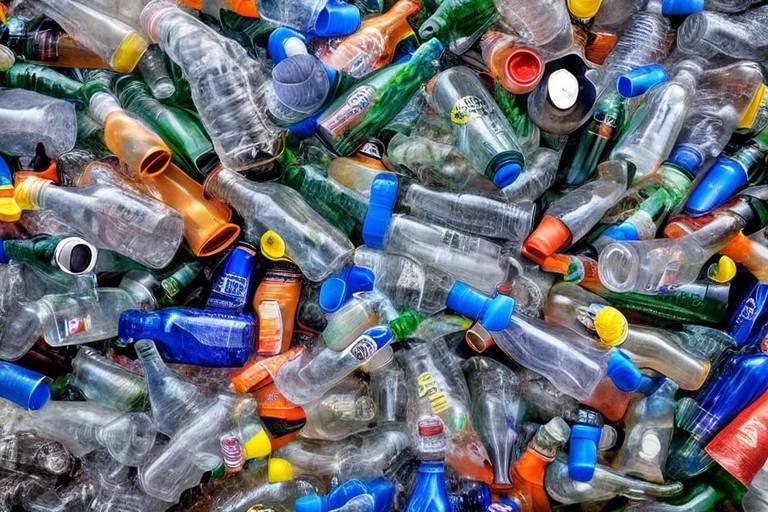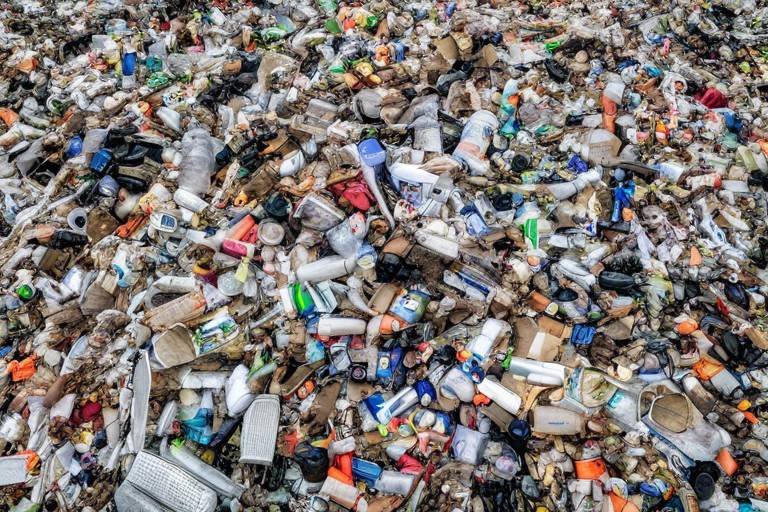Understanding the Importance of Gray Water Recycling
In today's world, where water scarcity is becoming a pressing issue, the concept of gray water recycling has emerged as a beacon of hope for sustainable water management. But what exactly is gray water, and why should we care about recycling it? Gray water is essentially the wastewater generated from our daily household activities, such as washing dishes, showering, and doing laundry, but excludes toilet waste. This means that a significant portion of the water we use can be repurposed rather than just discarded. Imagine if we could take the water that goes down our drains and give it a second life; that’s the magic of gray water recycling!
The significance of gray water recycling goes beyond mere conservation; it’s about creating a more sustainable future. By reusing this type of water, we can drastically reduce our reliance on freshwater sources, which are becoming increasingly limited. Think of it as a way to stretch our water resources, much like how we recycle paper or plastic to reduce waste. Not only does this practice help in lowering our water bills, but it also alleviates the pressure on our sewage systems and treatment facilities. In essence, gray water recycling is not just an eco-friendly choice; it’s a necessary step towards responsible water management in urban environments.
Moreover, the benefits of gray water recycling extend to the environment as well. By reducing the amount of wastewater entering treatment facilities, we minimize pollution levels in local water bodies. This contributes to healthier ecosystems and improved water quality, which is vital for the flora and fauna that depend on these habitats. In a world that often feels overwhelmed by pollution and resource depletion, gray water recycling stands out as a practical solution that promotes both conservation and environmental health.
As we delve deeper into the intricacies of gray water recycling, we will uncover various methods that can be employed, from simple DIY systems to advanced treatment technologies. This understanding is crucial for anyone looking to implement effective gray water solutions in their homes or communities. Additionally, we must consider the legal and regulatory frameworks surrounding gray water use to ensure compliance and safety. After all, while the benefits are substantial, it’s essential to approach this practice responsibly to protect public health and the environment.
In conclusion, the importance of gray water recycling cannot be overstated. It represents a significant opportunity for individuals and communities to contribute to sustainable water management practices. As we face increasing challenges related to water scarcity and pollution, embracing gray water recycling could be one of the most impactful choices we make for our planet. So, are you ready to join the movement towards a more sustainable future?
- What types of water are considered gray water? Gray water includes water from sinks, showers, bathtubs, and washing machines, but does not include toilet waste.
- Is gray water safe to use for irrigation? Yes, gray water can be safely used for irrigation if properly treated and managed to eliminate pathogens.
- What are the legal requirements for gray water recycling? Legal requirements vary by location, so it’s essential to check local regulations before implementing a gray water system.
- Can I install a gray water system myself? While some systems can be DIY, it's often recommended to consult with professionals to ensure safety and compliance.

What is Gray Water?
Gray water refers to the wastewater generated from household activities excluding toilet waste. This means that water from sinks, showers, bathtubs, and washing machines falls into this category. Understanding gray water is crucial for effective recycling practices and promoting sustainable water use, especially in urban environments where water scarcity is becoming a pressing issue.
To put it simply, gray water is like the second chance water in your home. Think about all the water that goes down the drain after a refreshing shower or while washing dishes. Instead of letting it go to waste, we can recycle it for other uses, making it a valuable resource rather than just another waste product.
Gray water typically contains soaps, detergents, food particles, and hair, but it is generally less contaminated than black water, which comes from toilets. This lower level of contamination makes gray water more suitable for recycling, as it can be treated and reused for various purposes, such as irrigation or toilet flushing. By understanding its sources, we can better appreciate its potential in sustainable water management.
Here are some common sources of gray water:
- Showers and Bathtubs: These contribute a significant amount of gray water, especially in households with multiple family members.
- Sinks: Water used for washing hands, dishes, and food prep can all be recycled.
- Washing Machines: This is often one of the largest contributors to gray water in a household.
By recognizing the various sources of gray water, we can take steps to implement effective recycling systems that not only reduce waste but also conserve precious freshwater resources. As we move forward in addressing global water challenges, understanding gray water is more important than ever.

Benefits of Gray Water Recycling
Recycling gray water is not just a trendy buzzword; it's a practical solution that provides a plethora of benefits for both households and the environment. Imagine reducing your water bill while simultaneously contributing to the conservation of our precious freshwater resources. Sounds like a win-win, right? By implementing gray water recycling systems, homeowners can significantly decrease their reliance on municipal water supplies. This not only leads to lower utility costs but also eases the burden on local water treatment facilities.
One of the most compelling advantages of gray water recycling is its ability to promote sustainable water management. In a world where water scarcity is becoming alarmingly common, having a reliable source of recycled water can make a huge difference. For instance, using gray water for irrigation can help maintain lush gardens and landscapes without tapping into the already limited freshwater resources.
Furthermore, gray water recycling plays a crucial role in reducing the overall volume of wastewater that needs to be treated. This reduction can lead to lower operational costs for wastewater treatment plants, which can be redirected toward improving infrastructure or further enhancing environmental protection measures. By utilizing gray water, we can help ensure that our sewage systems operate more efficiently and effectively.
In addition to economic benefits, the environmental impact of gray water recycling cannot be overstated. Here are a few key points to consider:
- Conservation of Ecosystems: By reducing the demand for freshwater, we help preserve natural habitats and ecosystems that are vital for biodiversity.
- Improved Water Quality: Less wastewater entering treatment facilities means lower levels of pollutants in local water bodies, resulting in healthier aquatic ecosystems.
- Mitigation of Urbanization Effects: As urban areas expand, the strain on water resources increases. Gray water recycling can help alleviate some of this pressure.
Ultimately, the benefits of gray water recycling extend beyond individual households. Communities that embrace this practice can experience enhanced water sustainability, improved environmental health, and reduced economic burdens associated with water supply and treatment. It's a collective effort that can lead us toward a more sustainable future.
What types of water are considered gray water?
Gray water typically comes from sources such as sinks, showers, and washing machines. It excludes water from toilets, which is classified as black water.
Is gray water safe to use for irrigation?
Yes, gray water can be safe for irrigation if properly treated and used according to local guidelines. It's essential to avoid using gray water on edible plants unless it has been adequately treated.
How can I set up a gray water recycling system at home?
Setting up a gray water recycling system can range from simple DIY solutions to more complex systems requiring professional installation. It's important to research local regulations and consider the best method for your household needs.
Are there any health risks associated with gray water recycling?
While gray water can contain some pathogens, proper treatment and adherence to safety guidelines can significantly minimize health risks. Regular maintenance of the system is also crucial.

Environmental Impact
Gray water recycling is not just a trendy buzzword; it’s a vital practice that can significantly alter our environmental footprint. By redirecting gray water from sinks, showers, and washing machines, we can substantially reduce our demand for freshwater resources. This is particularly important in urban areas where water scarcity is becoming a pressing issue. Imagine if every household could recycle even a fraction of the water they use daily—this could lead to a ripple effect, promoting healthier ecosystems and enhancing biodiversity.
The environmental benefits of gray water recycling extend beyond mere conservation. By decreasing the volume of wastewater that needs treatment, we can alleviate pressure on sewage systems, which are often overwhelmed in densely populated regions. This reduction in wastewater not only helps in maintaining the integrity of our water treatment facilities but also minimizes the potential for pollution in local water bodies. When fewer contaminants are released into the environment, it leads to cleaner rivers, lakes, and oceans, fostering a healthier habitat for aquatic life.
Moreover, gray water recycling plays a crucial role in mitigating the effects of urbanization. As cities expand, natural water systems are disrupted, leading to habitat loss and reduced biodiversity. By implementing gray water systems, we can create a more sustainable urban landscape. For instance, rain gardens and constructed wetlands can be integrated into gray water recycling systems, providing additional benefits such as stormwater management and wildlife habitats.
To illustrate the environmental impact of gray water recycling, consider the following table that highlights key benefits:
| Benefit | Description |
|---|---|
| Water Conservation | Reduces the need for freshwater, preserving natural water sources. |
| Pollution Reduction | Minimizes the volume of wastewater entering treatment facilities, leading to cleaner local water bodies. |
| Biodiversity Support | Helps maintain healthy ecosystems by ensuring cleaner water for wildlife. |
| Urban Resilience | Enhances the ability of urban areas to cope with water scarcity and environmental changes. |
In conclusion, the environmental impact of gray water recycling is profound. It’s not just about saving water; it’s about creating a sustainable future where our ecosystems can thrive alongside urban development. By embracing this practice, we can contribute to a healthier planet, ensuring that future generations inherit a world rich in natural resources and biodiversity.
- What types of water are considered gray water? Gray water includes water from sinks, showers, washing machines, and dishwashers, but excludes water from toilets.
- Is gray water safe to use for irrigation? Yes, gray water can be safely used for irrigation if properly treated and managed, but it's essential to follow local regulations.
- How can I set up a gray water recycling system at home? You can start with simple systems like diverting sink water to your garden or invest in more advanced treatment systems.
- What are the legal considerations for gray water recycling? Regulations vary by region, so it's important to check local laws to ensure compliance.

Conservation of Resources
When we talk about conserving resources, gray water recycling emerges as a champion in the fight against water scarcity. Imagine this: every time you wash your hands, take a shower, or do the dishes, you're generating water that could be reused instead of just going down the drain. By recycling gray water, households can significantly reduce their reliance on precious freshwater resources. This is especially critical in regions where water is a limited commodity, often leading to droughts and severe restrictions on water usage.
To put it into perspective, consider the average household. The Environmental Protection Agency (EPA) estimates that about 50-80% of residential wastewater is gray water. This means that a significant portion of what we consider waste actually has the potential to be repurposed. By implementing gray water recycling systems, families can save thousands of gallons of freshwater each year, which can be redirected towards more essential uses, such as drinking or irrigation.
Here are some key points highlighting the conservation benefits of gray water recycling:
- Reduction in Water Bills: By using gray water for non-potable purposes like irrigation or flushing toilets, households can see a noticeable drop in their water bills.
- Enhanced Water Availability: Conserving freshwater through gray water recycling helps ensure that there is enough water available for everyone, especially during dry seasons.
- Support for Local Ecosystems: By reducing the demand for freshwater, we help maintain the natural balance of local ecosystems, ensuring that plants and animals have the water they need to thrive.
Moreover, gray water recycling not only conserves water but also promotes a culture of sustainability. It encourages individuals and communities to rethink their water usage habits and recognize the value of every drop. The practice fosters a sense of responsibility towards the environment, urging people to adopt more eco-friendly behaviors.
As we look towards the future, the importance of conserving resources through gray water recycling will only grow. With increasing populations and the looming threat of climate change, innovative solutions like gray water systems will play a critical role in ensuring that we manage our water resources wisely. By embracing this practice, we can contribute to a more sustainable lifestyle, paving the way for future generations to enjoy the same resources we often take for granted.
- What is gray water? Gray water is wastewater generated from household activities such as bathing, washing dishes, and laundry, excluding toilet waste.
- Can gray water be reused safely? Yes, with proper treatment and guidelines, gray water can be reused safely for irrigation and other non-potable purposes.
- What are the legal regulations for gray water recycling? Regulations vary by region, so it's essential to check local laws before implementing a gray water recycling system.
- How much water can be saved through gray water recycling? Households can save thousands of gallons of water annually by recycling gray water, significantly reducing their freshwater consumption.

Reduction of Pollution
Recycling gray water is not just a nifty trick for conserving water; it also plays a significant role in reducing pollution in our environment. When we think about wastewater, our minds often jump straight to the sewage that comes from toilets. However, gray water—derived from sinks, showers, and washing machines—constitutes a substantial portion of the wastewater generated in households. By implementing gray water recycling systems, we can drastically decrease the volume of this wastewater that flows into treatment facilities.
When gray water is diverted for reuse, it means that less water is treated at sewage plants. This reduction in volume has a cascading effect on pollution levels. For instance, wastewater treatment facilities often discharge treated water back into local rivers and lakes, and by reducing the amount of gray water that requires treatment, we can lower the concentration of pollutants entering these water bodies. This ultimately leads to healthier aquatic ecosystems and improved water quality for all living organisms.
Moreover, the treatment of gray water is generally less intensive than that of black water (toilet waste). By recycling gray water, we can utilize simpler and less energy-consuming treatment methods, which further reduces the overall environmental footprint of wastewater management. For example, many DIY gray water systems use natural filtration methods, such as plants and sand, to clean the water before it's reused for irrigation or toilet flushing.
To illustrate the impact of gray water recycling on pollution reduction, consider the following table:
| Aspect | Before Gray Water Recycling | After Gray Water Recycling |
|---|---|---|
| Volume of Wastewater Treated | 100% of household wastewater | Less than 80% of household wastewater |
| Pollutants Entering Water Bodies | High concentration | Significantly reduced |
| Energy Consumption in Treatment | High | Lower |
In addition to these direct benefits, gray water recycling can foster a culture of environmental responsibility. As communities adopt these practices, they become more aware of their water usage and its impact on the environment. This awareness can lead to broader initiatives aimed at reducing pollution across various sectors. So, not only does recycling gray water help us manage our resources more efficiently, but it also contributes to a cleaner, healthier planet.
- What is gray water? Gray water is wastewater generated from household activities like washing dishes, taking showers, and doing laundry, excluding toilet waste.
- How can gray water be recycled? Gray water can be recycled using various methods, including simple DIY systems that filter and reuse water for irrigation or toilet flushing.
- Is gray water safe to use? Yes, gray water can be safe if properly treated and used according to guidelines to minimize health risks.
- What are the environmental benefits of gray water recycling? It reduces the volume of wastewater entering treatment facilities, lowers pollution levels in local water bodies, and conserves freshwater resources.

Methods of Gray Water Recycling
When it comes to gray water recycling, there are a variety of methods that cater to different needs, budgets, and levels of expertise. Whether you're a DIY enthusiast or looking for advanced systems, understanding these methods can empower you to make informed decisions about your water use. The beauty of gray water lies in its versatility; it can be reused for irrigation, toilet flushing, and even in washing machines. Let's dive into some of the most popular methods!
One of the simplest and most effective methods is the use of gravity-fed systems. These systems harness the natural force of gravity to direct gray water from sources like sinks and showers directly to your garden. Imagine a gentle stream flowing towards your plants, nourishing them without the hassle of complex machinery. This method is not only cost-effective but also energy-efficient, making it a favorite among eco-conscious homeowners.
For those looking for something a bit more sophisticated, pump systems offer a viable solution. These systems use pumps to transport gray water to various points of use, such as irrigation systems or toilets. While they require a bit more investment and maintenance, they provide greater flexibility and can cover larger areas. Think of it as a personal water delivery service for your home, ensuring that every drop counts.
Another interesting method is the constructed wetland system. This approach mimics natural wetlands and uses plants, soil, and microorganisms to filter and treat gray water. It's like creating a mini-ecosystem in your backyard! Not only does it recycle water, but it also creates a habitat for local wildlife, promoting biodiversity and enhancing your garden's aesthetics.
For those who prefer a more hands-off approach, commercially available gray water recycling systems are an excellent option. These systems come pre-packaged with everything you need, including filtration and treatment components. They are designed for easy installation and often include monitoring systems to ensure safe and efficient operation. It's like having a personal assistant for your water management—convenient and effective!
Regardless of the method you choose, it's essential to consider a few key factors:
- Source Quality: Ensure that the gray water you are recycling is free from harsh chemicals and contaminants.
- Local Regulations: Always check local laws regarding gray water use to ensure compliance.
- Maintenance: Regular maintenance is crucial for any system to function effectively and safely.
In summary, whether you opt for a DIY gravity-fed system or a more complex constructed wetland, the methods of gray water recycling are as diverse as the households they serve. By choosing the right system for your needs, you can contribute to sustainable water management while enjoying the many benefits of recycling gray water.
1. What types of gray water can be recycled?
Gray water typically comes from sinks, showers, and washing machines. It's important to avoid using water from toilets or kitchen sinks, as these contain contaminants.
2. Is gray water safe to use for irrigation?
Yes, gray water can be safely used for irrigation if it's properly treated and managed. However, it's advisable to avoid using it on edible plants unless specific treatment methods are applied.
3. How can I set up a gray water recycling system at home?
You can start with simple gravity-fed systems or purchase a commercially available system. It's essential to research and possibly consult with a professional to ensure proper installation and compliance with local regulations.
4. What are the legal requirements for gray water recycling?
Legal requirements vary by location. Always check with local authorities to understand the regulations and guidelines for gray water use in your area.
5. Can gray water recycling reduce my water bill?
Absolutely! By reusing gray water, you can significantly decrease your freshwater consumption, leading to lower water bills over time.

Legal and Regulatory Considerations
When diving into the world of gray water recycling, it's crucial to navigate the legal and regulatory landscape that governs its use. Just like you wouldn't drive without knowing the traffic laws, implementing a gray water system without understanding the rules can lead to significant headaches. Each region has its own set of regulations, and these can vary widely, so it's essential to familiarize yourself with local laws before setting up your system.
For instance, some areas may have specific guidelines on what types of gray water can be reused, such as water from sinks and showers, while others might restrict the use of water from washing machines or dishwashers. Additionally, there may be restrictions on how gray water can be used—whether for irrigation, toilet flushing, or other purposes. Understanding these regulations not only helps you stay compliant but also ensures that you're using gray water safely and effectively.
Compliance with these regulations can often involve obtaining permits or adhering to specific treatment standards. This is where the importance of local regulations comes into play. It’s advisable to consult with local water authorities or environmental agencies to get the most accurate and up-to-date information. They can provide guidance on:
- Permitting requirements
- Types of gray water allowed for reuse
- Installation standards
- Maintenance and monitoring protocols
Another factor to consider is the health and safety concerns associated with gray water. While gray water is generally less contaminated than black water, it can still harbor pathogens and other harmful substances if not treated properly. Regulations often mandate specific treatment methods to mitigate these risks. For example, some jurisdictions may require that gray water be filtered and disinfected before being reused, especially for irrigation or indoor use. Adhering to these guidelines not only protects public health but also enhances the sustainability of your water management practices.
In summary, understanding the legal and regulatory considerations of gray water recycling is not just a bureaucratic hurdle; it’s a vital step towards ensuring that your practices are safe, effective, and sustainable. By staying informed and compliant, you'll contribute to a healthier environment while making the most of this valuable resource.
Here are some common questions regarding gray water recycling:
- What is gray water? Gray water is wastewater generated from household activities such as bathing, laundry, and dishwashing, excluding toilet waste.
- Is gray water safe to use? When treated properly, gray water can be safe for various uses, including irrigation and toilet flushing.
- Do I need a permit for gray water recycling? This depends on your local regulations. Always check with your local authorities.
- What are the benefits of gray water recycling? Benefits include reduced freshwater consumption, lower water bills, and decreased pressure on sewage systems.

Local Regulations
When it comes to gray water recycling, understanding is crucial for both safety and compliance. Each region has its own set of rules that dictate how gray water can be collected, treated, and reused. These regulations are designed to protect public health and the environment, ensuring that the practice of recycling gray water does not inadvertently lead to contamination or health risks.
In many areas, the regulations may specify which sources of gray water are acceptable for reuse. For instance, water from sinks, showers, and laundry may be permissible, while water from dishwashers or toilets is typically excluded due to higher contamination risks. It's essential to familiarize yourself with these guidelines to ensure that you are using gray water safely and legally.
Furthermore, the methods of treatment and the intended uses of gray water can also be regulated. For example, some jurisdictions may allow gray water to be used for irrigation of non-edible plants, while others may have stricter rules that limit its use to subsurface irrigation systems to minimize human contact.
To help navigate these regulations, it is advisable to consult with local environmental agencies or water authorities. They can provide you with the most accurate and up-to-date information regarding:
- Permitted sources of gray water
- Recommended treatment methods
- Approved uses for recycled gray water
- Installation requirements for gray water systems
In summary, being aware of local regulations not only ensures compliance but also promotes responsible use of gray water in your community. It's an essential step in contributing to sustainable water management while protecting public health and the environment.
Q: What is gray water?
A: Gray water is wastewater generated from household activities such as bathing, laundry, and dishwashing, excluding toilet waste.
Q: Is gray water safe to use for irrigation?
A: Yes, but it depends on local regulations and how the gray water is treated. Always check local guidelines before using gray water for irrigation.
Q: What are the benefits of recycling gray water?
A: Recycling gray water can reduce freshwater consumption, lower water bills, and decrease pressure on sewage systems, contributing to sustainable water management.
Q: How can I set up a gray water recycling system?
A: Setting up a gray water recycling system can range from simple DIY solutions to more complex installations. It's important to follow local regulations and consider consulting a professional for guidance.
Q: Are there health risks associated with gray water?
A: Yes, gray water can contain pathogens and contaminants. Proper treatment and usage guidelines are essential to mitigate these risks.

Health and Safety Concerns
When it comes to gray water recycling, health and safety are paramount. While this practice offers numerous benefits, it also raises important questions about the potential risks associated with using recycled water. Gray water can contain traces of pathogens, chemicals, and other contaminants that could pose health risks if not properly managed. Therefore, understanding these concerns is crucial for anyone considering implementing a gray water system.
One of the primary concerns is the presence of microorganisms in gray water, which can originate from various household sources such as sinks, showers, and laundry. These microorganisms can include bacteria, viruses, and protozoa that, if not adequately treated, could lead to health problems. For example, using untreated gray water for irrigation can expose individuals to these pathogens, especially if they come into contact with edible plants. Thus, it’s vital to implement effective treatment methods to ensure the safety of recycled water.
Moreover, the types of detergents and soaps used in household cleaning can also impact the quality of gray water. Many commercial cleaning products contain harsh chemicals that can be harmful to both human health and the environment. To mitigate these risks, households should opt for biodegradable and environmentally friendly products, which reduce the potential for harmful chemical exposure in recycled water.
Another critical aspect to consider is how gray water is stored and used. Proper storage is essential to prevent the growth of harmful bacteria. Gray water should be used promptly and stored in a cool, dark place to minimize the risk of contamination. Additionally, it’s essential to follow guidelines for application, such as avoiding using gray water on root crops or edible plants that may be consumed raw.
To further emphasize the importance of safety, here are some key recommendations for managing health and safety concerns related to gray water:
- Always treat gray water before use to eliminate pathogens and contaminants.
- Use environmentally friendly cleaning products to minimize chemical exposure.
- Store gray water properly to prevent bacterial growth.
- Follow local guidelines and regulations regarding gray water use.
In conclusion, while gray water recycling presents an exciting opportunity for water conservation, it is essential to approach it with caution. By implementing proper treatment methods and adhering to safety guidelines, households can effectively manage health risks while enjoying the benefits of this sustainable practice.
Q: What is gray water?
A: Gray water is wastewater generated from household activities such as washing dishes, showering, and doing laundry, excluding toilet waste.
Q: Is gray water safe to use for irrigation?
A: Yes, but it must be treated properly to eliminate pathogens and contaminants. It's recommended to avoid using gray water on edible plants.
Q: What types of cleaning products should I use with gray water?
A: It's best to use biodegradable and environmentally friendly cleaning products to reduce harmful chemical exposure in gray water.
Q: How can I store gray water safely?
A: Store gray water in a cool, dark place and use it promptly to prevent bacterial growth.

Future of Gray Water Recycling
The future of gray water recycling is not just a trend; it's quickly becoming a necessity in our water-scarce world. As urban areas expand and populations grow, the demand for freshwater continues to rise, putting immense pressure on our existing water resources. But what if I told you that the solution might be right in our homes? Gray water, which is essentially the wastewater from our sinks, showers, and washing machines, can be treated and reused in a variety of ways, offering a sustainable alternative to traditional water sources.
Innovations in technology are paving the way for more effective gray water recycling systems. From advanced filtration techniques to smart home systems that automatically divert gray water for irrigation or toilet flushing, the possibilities are expanding. Imagine a future where your home not only conserves water but also contributes to the environment by reducing the strain on municipal water systems. This is not just a dream; it's a reality that is becoming increasingly feasible.
Moreover, public awareness and acceptance of gray water recycling are on the rise. With more educational programs and community initiatives promoting sustainable practices, people are beginning to understand the importance of utilizing gray water. This cultural shift is crucial for the widespread adoption of gray water systems. As we embrace these practices, we also pave the way for policy changes that support gray water use, making it easier for individuals and businesses to implement these systems without facing bureaucratic hurdles.
As we look ahead, several key factors will influence the future of gray water recycling:
- Technological Advancements: Innovations in treatment technologies will enhance the safety and efficiency of gray water systems, making them more accessible for everyday use.
- Regulatory Support: As governments recognize the benefits of gray water recycling, we can expect more supportive legislation that encourages its adoption.
- Community Engagement: Grassroots movements and local initiatives will play a significant role in educating the public and promoting the benefits of gray water recycling.
To illustrate the potential impact of gray water recycling on water conservation, consider the following table:
| Household Activity | Gray Water Generated (Gallons/Week) | Potential Reuse Options |
|---|---|---|
| Showering | 30 | Irrigation, Toilet Flushing |
| Washing Dishes | 15 | Irrigation |
| Washing Clothes | 20 | Irrigation, Toilet Flushing |
This table highlights just how much gray water we can generate in a typical household and the various ways we can reuse it. By tapping into this valuable resource, we can significantly reduce our reliance on freshwater and contribute to a more sustainable future.
In conclusion, the future of gray water recycling is bright. With advancements in technology, increasing public awareness, and supportive policies, we are on the cusp of a revolution in how we manage our water resources. By embracing gray water recycling, we not only conserve precious water but also take a significant step towards a more sustainable and environmentally friendly lifestyle.
1. What is gray water?
Gray water is wastewater generated from household activities such as bathing, washing dishes, and laundry, excluding toilet waste.
2. Is gray water safe to use?
When properly treated, gray water can be safe for non-potable uses such as irrigation and toilet flushing. However, it's essential to follow local regulations and guidelines.
3. How can I implement a gray water recycling system at home?
You can start with simple DIY systems for diverting gray water to your garden or invest in more advanced treatment systems. Research local regulations and consider consulting a professional for installation.
4. What are the environmental benefits of gray water recycling?
Gray water recycling helps conserve freshwater, reduces the volume of wastewater entering treatment facilities, and supports healthier ecosystems.
Frequently Asked Questions
- What is gray water, and how is it different from black water?
Gray water is the wastewater generated from household activities like washing dishes, showering, and laundry, excluding toilet waste, which is referred to as black water. Understanding this distinction is crucial for effective recycling practices.
- What are the main benefits of recycling gray water?
Recycling gray water can lead to reduced freshwater consumption, lower water bills, and decreased pressure on sewage systems. It not only saves money but also promotes sustainable water use, making it a win-win for both households and the environment.
- How does gray water recycling impact the environment?
By recycling gray water, we significantly reduce the demand for freshwater resources, which helps conserve ecosystems and supports biodiversity. This practice mitigates the environmental impacts of urbanization and fosters sustainable living.
- What methods can be used for gray water recycling?
There are various methods for recycling gray water, ranging from simple DIY systems to advanced treatment technologies. Some common methods include using a gray water diversion system or installing a treatment unit that purifies the water for reuse in irrigation or toilet flushing.
- Are there legal regulations regarding gray water recycling?
Yes, different regions have specific regulations governing the use of gray water. It's essential to familiarize yourself with local laws to ensure compliance and to implement safe practices that protect public health.
- What health and safety concerns should I be aware of?
When recycling gray water, it's vital to address health and safety concerns related to pathogens and contaminants. Proper treatment and adherence to usage guidelines can help mitigate potential risks, ensuring safe reuse of gray water.
- What does the future hold for gray water recycling?
As global water scarcity becomes a pressing issue, the future of gray water recycling looks bright. Innovations in technology and supportive policies can enhance its adoption and effectiveness, making it a key player in sustainable water management.




